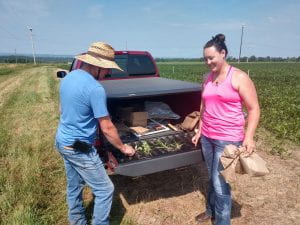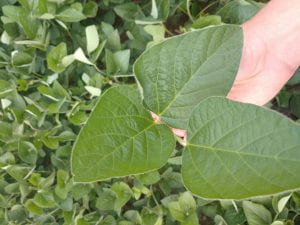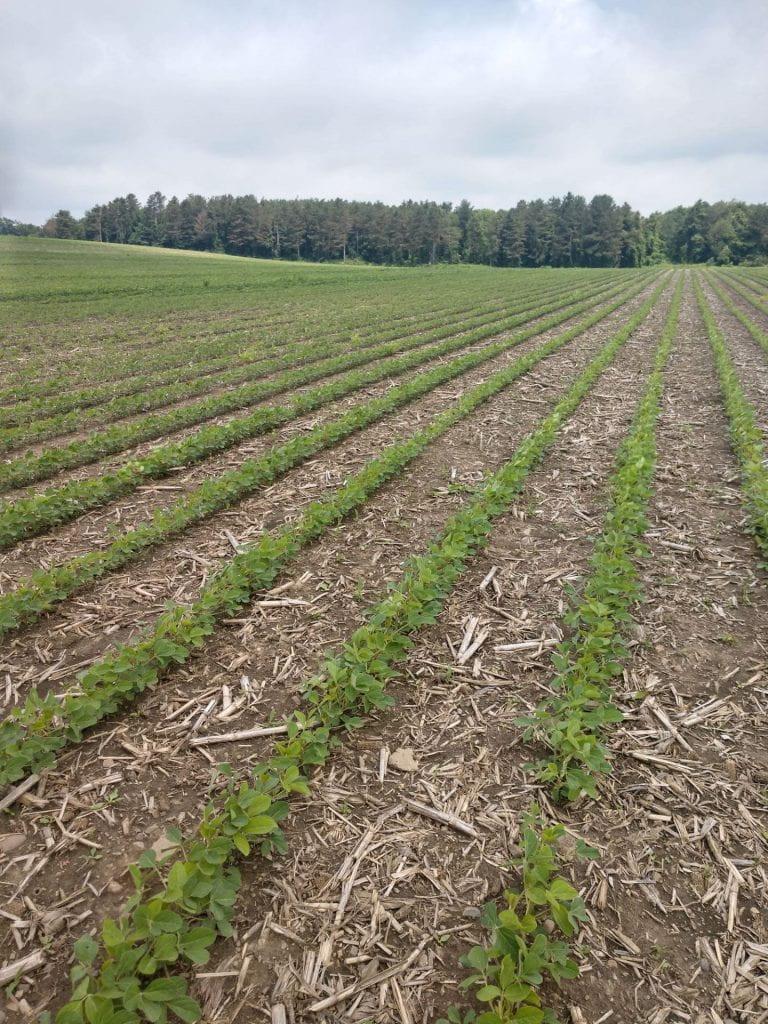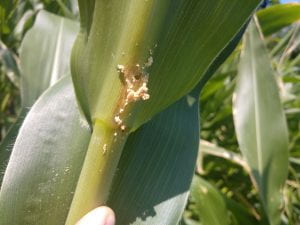This was one of my favorite weeks field-work wise. I got to drive out to meet with Jodi Putman, a Field Crop Specialist with the Northwest New York Dairy, Livestock & Field Crops Team. Jodi stays incredibly busy. She works full time with CCE as well as taking classes and doing research through a Cornell graduate student program. I got to hear her talk about some of the history behind sulfur availability in the United States as well as current soybean crop needs at the Musgrave field day earlier this year, so it was really exciting to see more of her plots in action.

Jodi and Josh, the new Field Crops and Forage Specialist with the Southwest New York Dairy, Livestock, and Field Crops Program, also took the time to give me some weed ID lessons in the field. Sedges have edges!
We started out the day sampling soybean trifoliates to be tested for sulfur content. It is very important for crops to have the right balance of essential nutrients available to try and avoid literally any shortage during the growing season. If plants have the right amount of each nutrient available at the right time of the year, not only will yields increase but possible nutrient losses are also greatly decreased. If soybeans don’t have enough sulfur at key points in the growing season, even large amounts of other nutrients will not be able to be used by the crop.

To sample soybean trifoliates, we picked the youngest fully developed leaves off of the plant. We sampled around 20 plants per plot. There were 4 treatments and 4 replications, so in total we sampled over 300 plants in one field alone.
Jodi also took me out to a local farmer’s field to see some possible European Corn Borer damage. The farmer didn’t plant the field with Bt treated seed, so the corn was genetically vulnerable to ECB attack. This kind of scouting is a big part of Jodi’s job. The farmer needed help figuring out how much of the corn was damaged and whether or not it was worth using a chemical to treat the corn this late in the season. Although a lot of damage was already done, Jodi was able to give some advice to help avoid future infestation.



